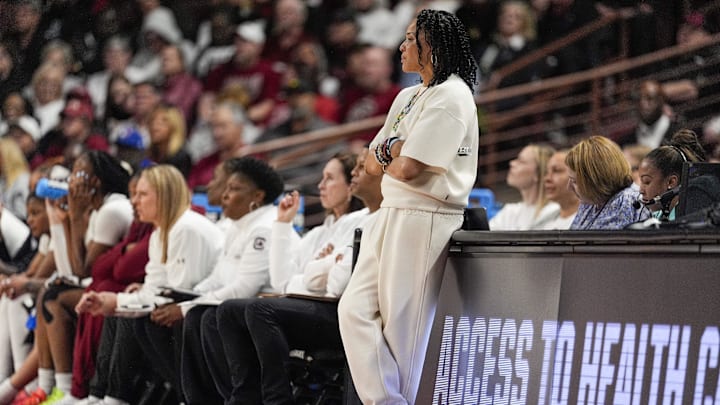Like all athletic departments in college sports, South Carolina is preparing to navigate a new NIL ear following the approval of the House v. NCAA statement that was passed earlier this month. The settlement allows schools to distribute up to $20.5 million annually to student-athletes. In response, South Carolina Athletics Director Jeremiah Donati posted a public letter on social media committing to distributing the maximum amount that is allowed. But when it comes to how that money will be distribute, the new AD isn't sharing details.
Ready for what’s next! 🤙🏼 pic.twitter.com/MIHAJcIJ3x
— Jeremiah Donati (@JDonati_SC) June 7, 2025
Last month, The State asked how the NIL budget would be spilt among Gamecock sports, such as football, men's and women's basketball, Donati was vague. He stated, “Well, one, (the settlement) needs to be approved, but we know what those budgets will be and we’ve already communicated that with coaches,” Donati said back in May, which was before the judge's final approval. “All those budgets are set (but) that’s not something we’ll reveal publicly, just for competitive purposes. It’s proprietary, but all that stuff has been baked.”
Donati's comments came shortly after Georgia's Athletic Director Josh Brooks had initially stated that the Bulldogs program would allocate 75% of their money to football players, 15% to men's basketball, 5% to women's basketball, and 5% to other teams. However, Brooks went back on his statement and said that those comments and contributions that were previously stated were evolving, also according to The State.
While Donati took the tight-lipped approach, head coach of the Gamecocks women's basketball team, Dawn Staley opted for brutal honesty. She expressed her concern that the settlement would impact recruiting. In a post-game interview in March, Staley also expressed that she wasn't sure if the NIL payments were fair. "I don't think we're paying the most in the NIL space," she said. "But I don't even know if it's fair, to be quite honest. It's what it is."
Staley went even further, cautioning that the NIL-driven players may want to look elsewhere if money was the deciding factor on where to play.
"You either have it or you don't in the NIL space, and then you just have to communicate that to agents, to parents and give them a choice," Staley said. "You got non-negotiables, you got priorities. What are your priorities? Is it NIL? If it's NIL, I'm quick to say, 'Go get the money. Put it away.'"
And then came the mic drop.
"If you want something different, a different experience, then we've been the five straight final fours. We know what that looks like and feels like and sounds like and what goes into that. We're gonna give you a different experience, you know, that's gonna cost you a few dollars."
With the NIL changes incoming, and athletic programs now being forced to become payroll departments, South Carolina is showing cautious strategic positioning as well as no-nonsense clarity moving forward. But one this is for sure, as schools nationwide navigate the new era of the NIL, the Gamecocks are balancing fairness, competition, and transparency going forward.
